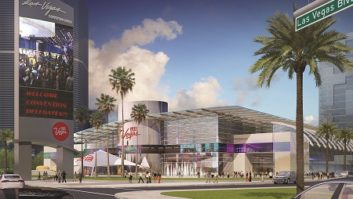There are some who think a radio station cannot serve art and business at the same time – that creativity and the drive for profit are mutually exclusive.
Not so. I offer WXPN in Philadelphia as a model of how a public radio station can work with a for-profit company to promote its brand and programming. The lessons are not limited to public radio, either.
WXPN(FM) dates back to a carrier current operation in 1945 started by engineering, drama and other students at the University of Pennsylvania. It is now among the leading public broadcasters in the country and an inspiration to those who believe in the potential of music and artist development on the radio.
As Tom Vernon reports, the station has moved into a beautiful new facility. Simultaneously, Real Entertainment Group unveiled a 350-seat live music performance venue in the same building and bearing the name of WXPN’s most popular export. The venue is called World Café Live. The station and the venue, entwined in a synergistic way, are independently owned and operated – one a not-for-profit public radio station, the other a for-profit entertainment facility.
Food for the ears
Everything about the facility speaks to the interaction of radio station, musician and listener. Large windows at the actual “World Café” performance studio let the public watch recording sessions from a lobby. The main entrances are visible from two streets. The WXPN logo is displayed above the Walnut Street entrance in a red neon sign that matches the building’s art deco feel.
The World Café Live sign is over the door. Window canopies along Walnut Street feature graphic images of musicians. On 31st Street, concertgoers and visitors enter through “Donor Alley,” past a wall where the names of station contributors are visible.
Fitting a modern radio station and a concert venue into an historic manufacturing-oriented building required the work of three architectural and design organizations. Bower Lewis Thrower was hired by the developer to design the overall building renovation. Meyer Associates was brought in by WXPN to design offices and studios. DAS designed performance and dining areas.
The “gut rehab” renovation included restoration and repair of windows, doors, glass, masonry and ornamental features. The planners proudly point out an art deco facade and grand staircase and the use of rustic wood, ceramics and brightly colored woven rugs.
The station now enjoys a 1,000-square-foot, double-height radio performance studio for “World Café” with custom acoustic treatments and space for large bands and audience. The station has green rooms, a children’s programming studio, temperature-controlled archives, expandable conference rooms (useful during fund drives) and a listening room for staffers to preview CDs. There is space not only for the station staff but also two dozen students and interns.
Features on the venue side include the main music hall (350 seats, but room for 700 standing); food and beverage service; an actual café; lobby/mezzanine space that can be rented out; and retail areas for selling tickets and merchandise.
Connections
Thanks to smart planning, here is a radio station whose contributions to the cultural life of Philadelphia can be more fully appreciated – a station that will benefit every time a listener comes to the venue or the café next door. WXPN thus associates itself even more firmly with live and innovative music in the minds of Philadelphians.
The developers and management of the music venue, meanwhile, capitalize on the station’s listener base and exceptional name recognition. And the city itself comes out ahead, with an exciting dual-use development that is good for business and for the arts.
Managers of radio stations should take note of such projects. For me, the story reminds me of what I already knew about WXPN: that a radio format, nurtured with care over time by people who understand it, can establish a remarkable connection with an audience.
The new facility shows us that being “public” does not prevent a station from entering into creative marketing with the private sector. And it offers a model of how any station, public or private, might build on its strengths through carefully chosen business and governmental partnerships.
Here’s a side note of interest to radio fans: The developer for the project, Dranoff Properties, is the same one that in 2003 completed a $65 million redevelopment of the former RCA Victor “Nipper” Building – with a stained glass Jack Russell terrier listening to “his master’s voice,” a sight familiar to many people in the Philadelphia area – into apartments, retail and parking. The project on the Camden, N.J., waterfront was considered of one of the largest rehab projects in the country.







